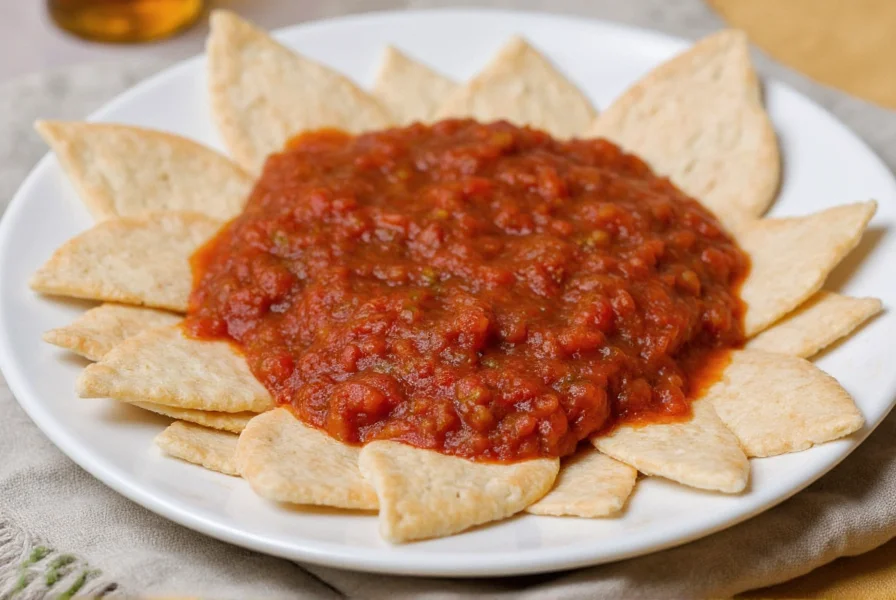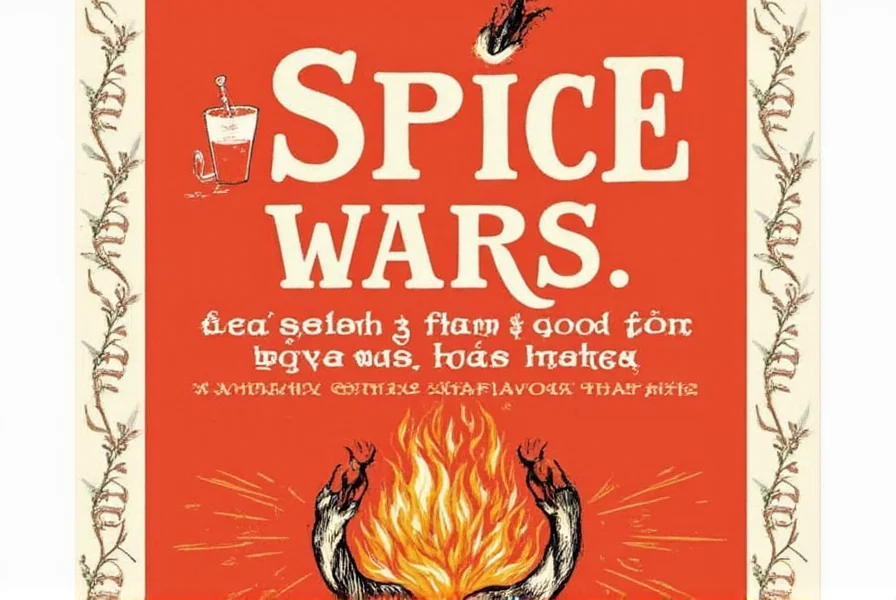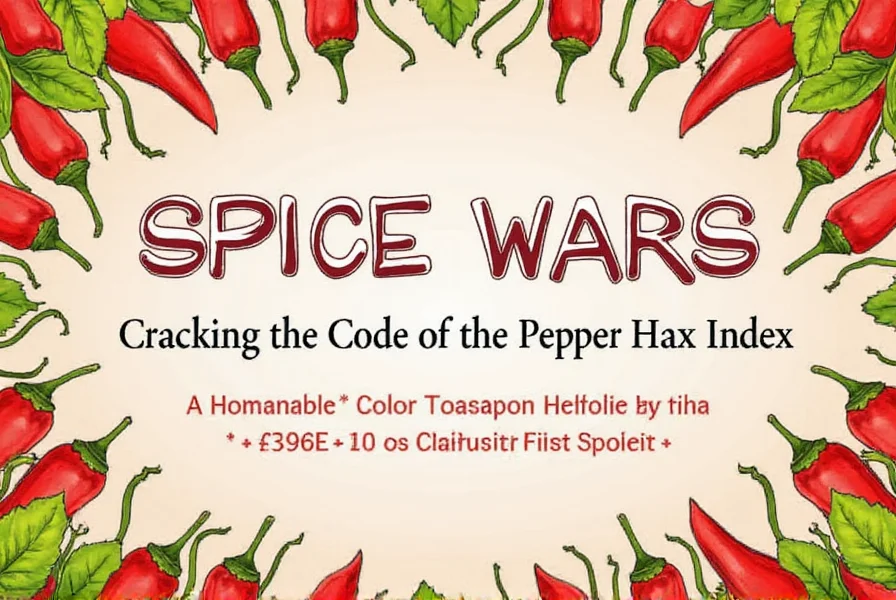The pepper heat index, officially known as the Scoville scale, measures the spiciness of chili peppers and other foods containing capsaicin. It's the standard reference for understanding how hot a pepper is. Created by pharmacist Wilbur Scoville in 1912, the scale has been updated with modern scientific methods to provide accurate heat measurements.
Table of Contents
- What Is the Pepper Heat Index?
- How Does It Work?
- Popular Peppers & Their Heat Levels (With Comparison Table)
- Why Understanding the Pepper Heat Index Matters
- Pro Tips for Using Spicy Peppers Like a Boss
- Buying Guide: Choosing the Right Pepper Heat Level for You
- Frequently Asked Questions About the Pepper Heat Index
- Conclusion
What Is the Pepper Heat Index?
The pepper heat index—officially called the Scoville scale—is the measure of how spicy (or hot) a chili pepper or any food containing capsaicin (the compound that makes peppers hot) really is. Created by pharmacist Wilbur Scoville back in 1912, this scale has stood the test of time and remains the go-to reference for all things fiery. Modern scientific methods like high-performance liquid chromatography (HPLC) now provide precise measurements, as documented by the USDA Food Database.

How Does the Pepper Heat Index Work?
Back in the day, Scoville tested spiciness using human tasters and sugar water—a method known as the Scoville Organoleptic Test. Tasters would dilute pepper extract with sweetened water until the heat was no longer detectable. The degree of dilution gave the pepper its Scoville Heat Units (SHU).
Modern science has since replaced tongue-testing with high-performance liquid chromatography (HPLC), which measures the actual amount of capsaicinoids in a pepper. But the SHU values remain—and they still serve as our best way to know what we're getting into before biting into something hot.
Breaking Down the Scale
- 0–1,000 SHU: Mild (Bell peppers, sweet peppers)
- 1,000–15,000 SHU: Medium (Jalapeño, Serrano)
- 15,000–100,000 SHU: Hot (Cayenne, Thai chili)
- 100,000–1,000,000 SHU: Super-Hot (Habanero, Ghost Pepper)
- Over 1,000,000 SHU: Insane (Carolina Reaper, Trinidad Moruga Scorpion)
Popular Peppers & Their Heat Levels
| Pepper Name | Heat Level (SHU) | Common Uses | Flavor Notes |
|---|---|---|---|
| Bell Pepper | 0 | Salads, Stir-fries | Sweet, crunchy |
| Jalapeño | 2,500–8,000 | Tex-Mex dishes, salsas | Grassy, bright |
| Serrano | 10,000–23,000 | Hot sauces, tacos | Fruity, sharp |
| Cayenne | 30,000–50,000 | Spice blends, marinades | Earthy, fiery |
| Habanero | 100,000–350,000 | Hot sauces, Caribbean cuisine | Tropical fruit, citrusy |
| Ghost Pepper (Bhut Jolokia) | 800,000–1,041,427 | Extreme hot sauces, dares | Smoky, floral |
| Carolina Reaper | 1,400,000–2,200,000 | Chili challenges, death-defying cooking | Sweet, smoky, nuclear |

Why Understanding the Pepper Heat Index Matters
Knowing the pepper heat index isn't just about impressing friends at your next taco night—it's practical wisdom in the kitchen. Here's why it matters:
- Control the Burn: You don't want to accidentally turn your creamy poblano soup into tear-inducing horror soup. Matching your recipe with the right pepper keeps flavors balanced.
- Experiment Smart: Love habaneros but hate the afterburn? Try milder cousins like serranos or even shishito peppers for flavor without the face-off.
- Avoid Kitchen Disasters: Imagine giving your kid-friendly spaghetti a sneaky jalapeño boost only to find out junior's tongue is now on fire. Not cool (literally). Know the heat level first.
- Respect Tradition: Authentic recipes from Mexico to Thailand rely on specific peppers. Knowing the heat index helps you stay true to regional tastes—or create your own spicy signature style.
Pro Tips for Using Spicy Peppers Like a Boss
Ready to unleash some controlled chaos in your cooking? Here are expert-tested tips to handle hot peppers like a pro:
1. Wear Gloves When Handling Super-Hots
Ghost peppers and reapers can leave burns on your skin. Protect those hands unless you enjoy rubbing your eyes later and regretting every life choice. 🙃
2. Remove the Seeds and Membranes
Most of the heat is concentrated there. Want less burn? Scoop 'em out. Want full nuclear meltdown? Leave them in. Simple as that.
3. Balance with Fat or Sugar
Milk, yogurt, sour cream, and even honey or lime juice can soothe the flames. Next time your curry bites back, reach for a cooling sidekick.
4. Use Fresh Peppers or Dried Variants?
Dried peppers often have a deeper, smokier flavor and sometimes more intense heat. Chipotle (smoked jalapeño) and ancho (dried poblano) are staples in many cuisines.
5. Toast Peppers for More Flavor
Lightly toasting dried chilies before use enhances their earthy richness. Just be careful not to overdo it—those little guys can go from aromatic to bitter fast.

Buying Guide: Choosing the Right Pepper Heat Level for You
Whether you're buying fresh peppers, bottled sauces, or spices, here's how to navigate the spice aisle like a boss:
For Beginners: Keep It Cool
- Try: Jalapeños, poblanos, Anaheim peppers
- Best For: Mexican dishes, stuffing, pizza toppings
- Product Highlight: Fresh Poblano Packets (sold in bundles of 6)
- Features: Mild heat with rich, earthy notes
- Advantages: Great for roasting and stuffing
- Use Cases: Chiles rellenos, enchiladas
- Target Audience: Newbies, families with kids
- Occasions: Weeknight dinners, casual gatherings
For the Adventurous: Step Up the Spice
- Try: Serranos, cayenne, banana peppers
- Best For: Salsas, marinades, grilled dishes
- Product Highlight: Organic Cayenne Powder Jar (2 oz)
- Features: Fine powder with consistent heat
- Advantages: Easy to sprinkle into dishes
- Use Cases: Soups, dry rubs, spice mixes
- Target Audience: Home cooks wanting more kick
- Occasions: Brunches, dinner parties
For Fire-Starters: Go Full Inferno
- Try: Habaneros, ghost peppers, Carolina Reapers
- Best For: Extreme hot sauces, competitive eaters, revenge dinners
- Product Highlight: Reaper Pepper Extract (0.5 fl oz)
- Features: Ultra-concentrated heat in liquid form
- Advantages: A few drops = extreme fire
- Use Cases: Challenge sauces, secret weapon in stews
- Target Audience: Spice junkies, culinary daredevils
- Occasions: Cook-offs, bachelor/bachelorette parties
Frequently Asked Questions About the Pepper Heat Index
What is the highest possible Scoville rating?
According to USDA Food Database and scientific studies, the hottest naturally occurring peppers like the Carolina Reaper reach up to 2.2 million SHU. Pure capsaicin (the compound that makes peppers hot) measures around 16 million SHU. Synthetic compounds like Resiniferatoxin can reach up to 16 billion SHU, but these aren't found in edible peppers.
Why do some peppers with similar Scoville ratings taste differently hot?
The Scoville scale measures total capsaicin content, but different peppers contain varying types of capsaicinoids that affect heat perception differently. Additionally, factors like sugar content, moisture level, and flavor profile can influence how "hot" a pepper seems. For example, habaneros have citrusy notes that might make their heat feel more intense than a cayenne pepper with similar SHU but earthier flavor.
How can I build my tolerance to spicy foods?
Building spice tolerance works through gradual exposure. Start with milder peppers like jalapeños and slowly work your way up. Consistency matters more than occasional extreme challenges. Eat spicy foods regularly (2-3 times per week), and your body will gradually adapt. Pairing spicy foods with dairy or fats can help manage the heat while you build tolerance. Never force yourself to extreme levels too quickly, as this can cause digestive issues.
Does cooking affect a pepper's heat level?
Cooking can both increase and decrease perceived heat depending on the method. Raw peppers often deliver an immediate, sharp heat. When cooked, especially in liquid-based dishes, capsaicin disperses throughout the food, potentially making the heat feel more widespread. Roasting can concentrate flavors and sometimes intensify heat, while prolonged cooking in acidic liquids can break down some capsaicin. Interestingly, capsaicin is fat-soluble, so cooking peppers in oil can extract more heat into the oil.
Why do spicy foods make me sweat?
Capsaicin triggers the same physiological responses as overheating. When you eat spicy food, capsaicin binds to pain receptors (TRPV1) that normally respond to heat, tricking your brain into thinking your body temperature is rising. This causes sweating as your body attempts to cool itself down—a phenomenon called gustatory sweating. The effect varies by individual and tends to be more pronounced with extremely hot peppers.
What's the best way to relieve burning from hot peppers?
Dairy products (milk, yogurt, sour cream) are most effective because casein breaks down capsaicin. Sugar or honey can also help by binding to capsaicin molecules. Avoid drinking water, as capsaicin is oil-based and won't dissolve in water—this can actually spread the burn. For skin contact, rubbing alcohol or high-proof spirits can dissolve the oils, followed by washing with soap and water. Never touch your eyes after handling hot peppers!
Do pepper heat levels vary within the same type of pepper?
Absolutely. Many factors affect a pepper's heat level: growing conditions (soil, climate, water stress), ripeness (fully ripe peppers are often hotter), and even position on the plant. This is why Scoville ratings are given as ranges rather than exact numbers. For example, jalapeños can range from 2,500-8,000 SHU depending on these variables. Specialty growers sometimes stress plants to increase capsaicin production and create hotter varieties.
Is the Scoville scale still scientifically accurate today?
The original Scoville Organoleptic Test was subjective, but modern measurements use high-performance liquid chromatography (HPLC) to precisely measure capsaicinoid content. These measurements are then converted to Scoville Heat Units for consistency with historical data. While HPLC provides more accurate measurements, the Scoville scale remains the standard for communicating heat levels to consumers because it's more intuitive than raw capsaicin measurements.
Conclusion: Your Journey Through the Pepper Heat Index Starts Now
The pepper heat index is more than just numbers—it's your gateway to flavor, adventure, and culinary confidence. Whether you're crafting a gentle pad thai or going full Rambo on a batch of habanero wings, knowing your SHUs means knowing when to bring the heat… and when to back off.
So next time you're in the grocery store, take a moment to read the label—or better yet, check the Scoville rating. Your tongue (and maybe your friends) will thank you later. And remember: the real magic happens when heat meets balance. So go ahead—explore the fire, but cook smart.
Stay spicy, folks. 🔥🌶️










 浙公网安备
33010002000092号
浙公网安备
33010002000092号 浙B2-20120091-4
浙B2-20120091-4